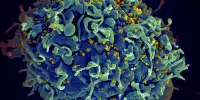According to a study published online Nov. 17 in JAMA Network Open, a risk score tool can precisely forecast a person’s 13-year dementia risk.
Using information from a diagnostic assessment of 444,695 people in the United Kingdom, Lina Ren of the Shenzhen Mental Health Centre in China and colleagues created a point risk score prediction model for dementia.
The researchers discovered that throughout the 13 years of follow-up, dementia occurred 0.7% for men and 0.8% for women (mean baseline age was 56.2 years). The final multivariate Cox proportional hazards regression model’s C statistic was 0.86 for men and 0.85 for women in the training set compared to 0.85 for men and 0.87 for women in the testing data set.
The weighted population-attributable fraction revealed that while several modifiable risk and protective factors were identical between men and women, they also contained independent risk factors that contributed to 53.35 percent of women acquiring dementia and 31.7% of males developing dementia. Men’s total point scores for the risk score model ranged from 18 to 30, while women’s total point scores ranged from 17 to 30. The risk score model’s 13-year dementia risk prediction accuracy for both sexes was almost 100%.
“The results of this diagnostic study imply that a risk score tool can be utilized for individual prediction of dementia risk,” the authors write. “This tool may assist people identify their potential risk profile and provide advise on precise and timely activities to take to prevent or delay dementia.”
















